Daniel E. Lucani
Touch-Augmented Gaussian Splatting for Enhanced 3D Scene Reconstruction
Aug 11, 2025Abstract:This paper presents a multimodal framework that integrates touch signals (contact points and surface normals) into 3D Gaussian Splatting (3DGS). Our approach enhances scene reconstruction, particularly under challenging conditions like low lighting, limited camera viewpoints, and occlusions. Different from the visual-only method, the proposed approach incorporates spatially selective touch measurements to refine both the geometry and appearance of the 3D Gaussian representation. To guide the touch exploration, we introduce a two-stage sampling scheme that initially probes sparse regions and then concentrates on high-uncertainty boundaries identified from the reconstructed mesh. A geometric loss is proposed to ensure surface smoothness, resulting in improved geometry. Experimental results across diverse scenarios show consistent improvements in geometric accuracy. In the most challenging case with severe occlusion, the Chamfer Distance is reduced by over 15x, demonstrating the effectiveness of integrating touch cues into 3D Gaussian Splatting. Furthermore, our approach maintains a fully online pipeline, underscoring its feasibility in visually degraded environments.
Not all those who drift are lost: Drift correction and calibration scheduling for the IoT
Jun 10, 2025Abstract:Sensors provide a vital source of data that link digital systems with the physical world. However, as sensors age, the relationship between what they measure and what they output changes. This is known as sensor drift and poses a significant challenge that, combined with limited opportunity for re-calibration, can severely limit data quality over time. Previous approaches to drift correction typically require large volumes of ground truth data and do not consider measurement or prediction uncertainty. In this paper, we propose a probabilistic sensor drift correction method that takes a fundamental approach to modelling the sensor response using Gaussian Process Regression. Tested using dissolved oxygen sensors, our method delivers mean squared error (MSE) reductions of up to 90% and more than 20% on average. We also propose a novel uncertainty-driven calibration schedule optimisation approach that builds on top of drift correction and further reduces MSE by up to 15.7%.
RAGE for the Machine: Image Compression with Low-Cost Random Access for Embedded Applications
Feb 07, 2024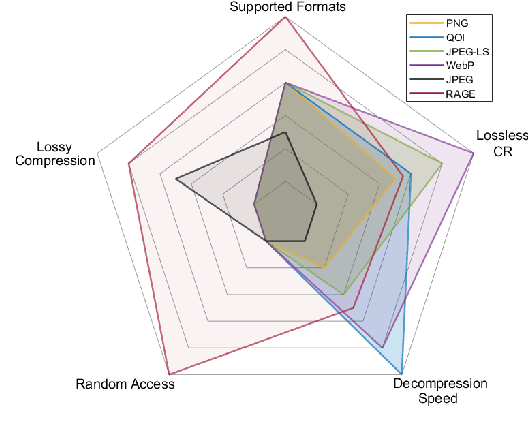
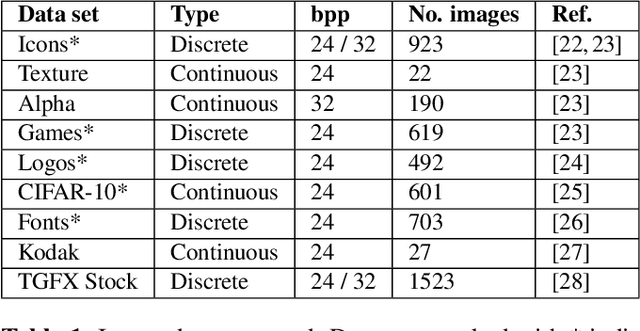
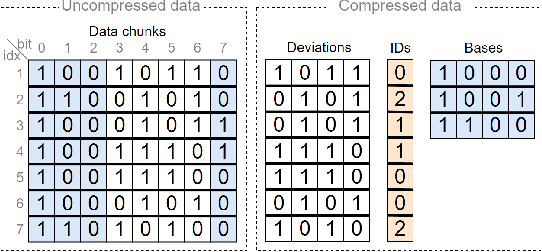
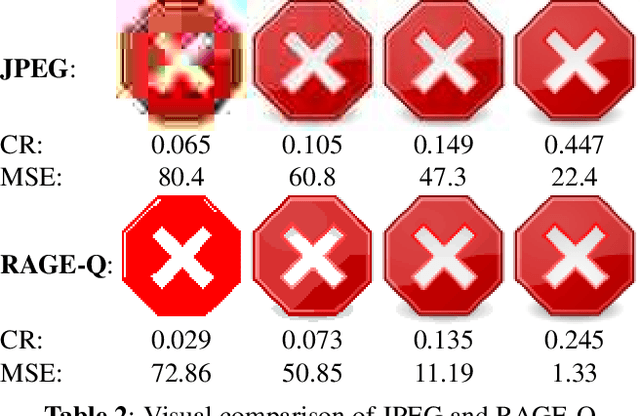
Abstract:We introduce RAGE, an image compression framework that achieves four generally conflicting objectives: 1) good compression for a wide variety of color images, 2) computationally efficient, fast decompression, 3) fast random access of images with pixel-level granularity without the need to decompress the entire image, 4) support for both lossless and lossy compression. To achieve these, we rely on the recent concept of generalized deduplication (GD), which is known to provide efficient lossless (de)compression and fast random access in time-series data, and deliver key expansions suitable for image compression, both lossless and lossy. Using nine different datasets, incl. graphics, logos, natural images, we show that RAGE has similar or better compression ratios to state-of-the-art lossless image compressors, while delivering pixel-level random access capabilities. Tests in an ARM Cortex-M33 platform show seek times between 9.9 and 40.6~ns and average decoding time per pixel between 274 and 1226~ns. Our measurements also show that RAGE's lossy variant, RAGE-Q, outperforms JPEG by several fold in terms of distortion in embedded graphics and has reasonable compression and distortion for natural images.
Energy Efficient Data Recovery from Corrupted LoRa Frames
Jul 19, 2021
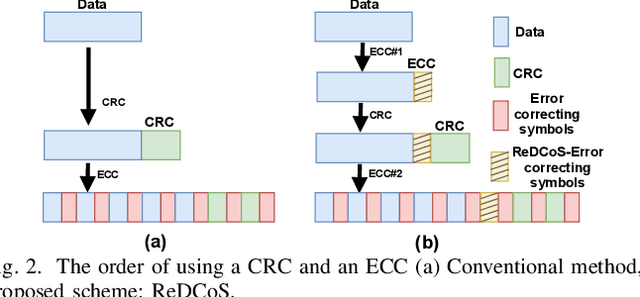


Abstract:High frame-corruption is widely observed in Long Range Wide Area Networks (LoRaWAN) due to the coexistence with other networks in ISM bands and an Aloha-like MAC layer. LoRa's Forward Error Correction (FEC) mechanism is often insufficient to retrieve corrupted data. In fact, real-life measurements show that at least one-fourth of received transmissions are corrupted. When more frames are dropped, LoRa nodes usually switch over to higher spreading factors (SF), thus increasing transmission times and increasing the required energy. This paper introduces ReDCoS, a novel coding technique at the application layer that improves recovery of corrupted LoRa frames, thus reducing the overall transmission time and energy invested by LoRa nodes by several-fold. ReDCoS utilizes lightweight coding techniques to pre-encode the transmitted data. Therefore, the inbuilt Cyclic Redundancy Check (CRC) that follows is computed based on an already encoded data. At the receiver, we use both the CRC and the coded data to recover data from a corrupted frame beyond the built-in Error Correcting Code (ECC). We compare the performance of ReDCoS to (I) the standard FEC of vanilla-LoRaWAN, and to (ii) RS coding applied as ECC to the data of LoRaWAN. The results indicated a 54x and 13.5x improvement of decoding ratio, respectively, when 20 data symbols were sent. Furthermore, we evaluated ReDCoS on-field using LoRa SX1261 transceivers showing that it outperformed RS-coding by factor of at least 2x (and up to 6x) in terms of the decoding ratio while consuming 38.5% less energy per correctly received transmission.
 Add to Chrome
Add to Chrome Add to Firefox
Add to Firefox Add to Edge
Add to Edge